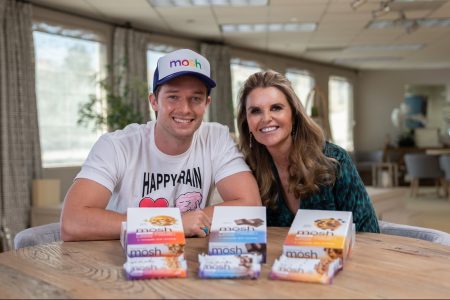- It is important to cast a wide net to reach a large audience when using social media marketing.
- Older generations are on every social media channel, despite the common misconception that this demographic is mainly offline.
- When targeting older demographics, be sure to use a different approach. The important trends and tactics for younger generations, like Gen Z and millennials, will not work for older generations.
- This article is for small business owners and marketers looking to reach older demographics through social media marketing.
Today’s marketers often place a great deal of focus on reaching Gen Z and millennials through organic and paid content on social media. But what about Gen Xers and baby boomers? If you’re trying to reach an older demographic, it might be difficult to pinpoint which social platform is best for engaging with your audience – but don’t make the mistake of thinking they’re not on there at all.
The Pew Research Center has been researching and recording social media usage for more than a decade. Business News Daily studied Pew’s research to learn more about older demographics’ use of social platforms and reached out to marketing professionals to see the kind of success they’ve had in engaging with older audiences on social media.
Many of the marketers we spoke with reported that Facebook was the most useful platform for reaching an older demographic. According to Senior Living, roughly half of the 47 million seniors living in the U.S. are active Facebook users.
Jake Tully, head of the creative department at Trucking Unlimited, pointed out that many of these users prefer to share media from another source instead of posting something themselves.
“Rather than taking selfies or giving out information regarded as personal, these older users enjoy filling up their timelines sharing articles, photos, and videos relating to their interests, and do so quite frequently,” he said. “With this in mind, we try to cultivate an online presence with news stories that may bring the opinionated people out of the shadows.”
The trend towards seniors using Facebook is only likely to continue. According to The Senior List, seniors are the fastest growing user group on the social media platform today.
Andrew D’Amours, co-founder of Flytrippers, said Facebook is the best platform because it gives businesses more credibility with older audiences as they see their younger friends and relatives interacting with posts.
To learn more about creating engaging posts on Facebook, read our Facebook for Business Guide.
Kevin Huhn, growth strategist and consultant at Hopes, Wishes and Dreams, said it’s not enough to know where your audience is; you should also consider the type of product you’re promoting when you choose which social channel to use. While Facebook is a good platform for promoting personal products, LinkedIn is more successful for advertising business offers.
According to Pew, LinkedIn is more popular with 30- to 49-year-olds than with the 50-and-older demographic: 33% of internet users ages 30 to 49 use LinkedIn, compared with 24% of 50- to 64-year-olds and 20% of those 65 and older.
Some companies find success in reaching older audiences on Twitter. Deborah Sweeney, CEO of MyCorporation, said her company connects with Gen Xers and baby boomers frequently, especially through relevant Twitter chats.
According to Pew, fewer internet users are on Twitter than on some other social platforms, so you might not find as much success here as you would on Facebook, depending on your audience.
Check out our Twitter for Business Guide for more tips on using this platform.
Pinterest might be a good social media platform to focus on if women are part of your core buying demographic, said Laura Simis, an inbound specialist at Coalmarch Productions. Pinterest also helps connect you with communities that share interests, Simis said. This platform is entirely visual, so think about what types of photos or videos your business could post if you decide to look into Pinterest.
Visit our Pinterest for Business Guide for more tips.
An important part of any marketing campaign is knowing your audience. If you’re looking to market to baby boomers or Gen X, Facebook is your best bet. However, depending on your audience, Twitter, LinkedIn and Pinterest might be viable options as well.
6 tips for marketing to seniors
If you’re looking to market specifically to seniors and other older demographics, here are a few tips to keep in mind:
- Use appropriate language. Besides avoiding crude or suggestive language, make sure to use words and phrasing that a large audience will understand. When specifically targeting older demographics, avoid using jargon or slang that would be understood only by millennials or Gen Z. Rather, use simple descriptions of your products and services, and clearly outline their benefits.
- Stay away from fear-based tactics. It’s a common trope to “scare” seniors into buying a product or service, particularly if it comes to their health and safety. However, Pew research shows that seniors use digital tools and social media to remain independent and connected to loved ones. The isolation once used to prey upon older demographics is rapidly becoming less relevant, so as you develop your marketing messaging, try to steer your language away from fear.
- Market on multiple channels. Do not limit your marketing to one platform; use all possible channels to reach as many people as you can. In many situations, older demographics use different channels. Some use only one, and some might use all of them. In either situation, it is important to tailor your message to each channel. For example, use eye-catching images on all channels but write different marketing copy for each channel.
- Be clear about what you want. Do you want your target audience to sign up for a newsletter, register for a free trial, or call your business for more information? Know precisely what you want your older demographic audience to do. Referred to as a “call to action“, this is a key part of your marketing strategy and will be essential to the success of your campaign.
- Don’t sleep on video. YouTube is the second-largest website in the world. Videos demonstrating your product, showcasing testimonials, or giving clear how-to tips will be beneficial to the older demographic searching for solutions like the ones you offer.
- Don’t underestimate your audience. Some marketers make the incorrect assumption that other people make the buying decisions for seniors. While this is certainly true in some cases, it’s also true in every demographic. Older demographics are independent and want to conduct their research. Adjust your marketing accordingly by speaking directly to them in your copy.
Source interviews were conducted for a previous version of this article.
Read the full article here










